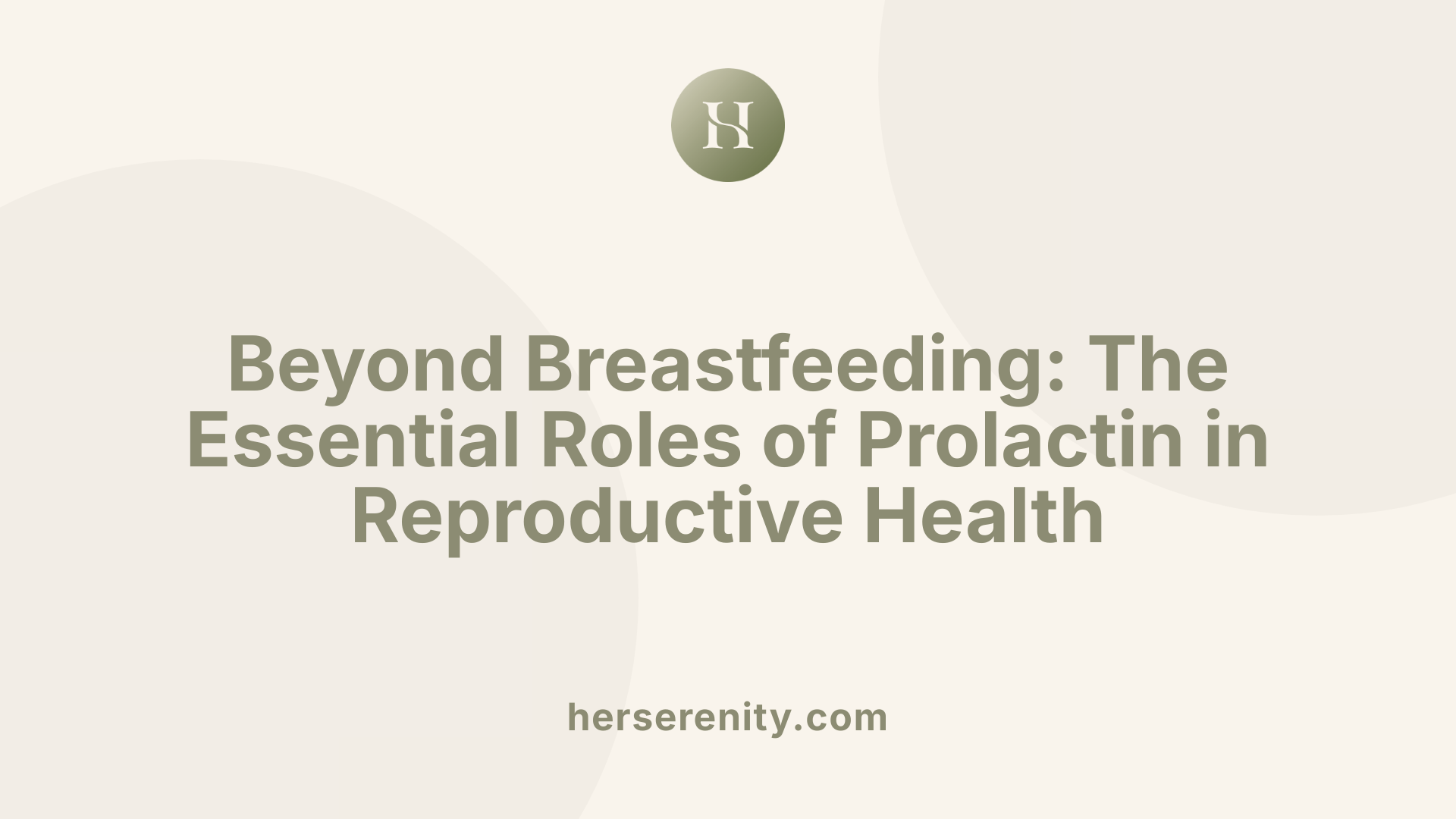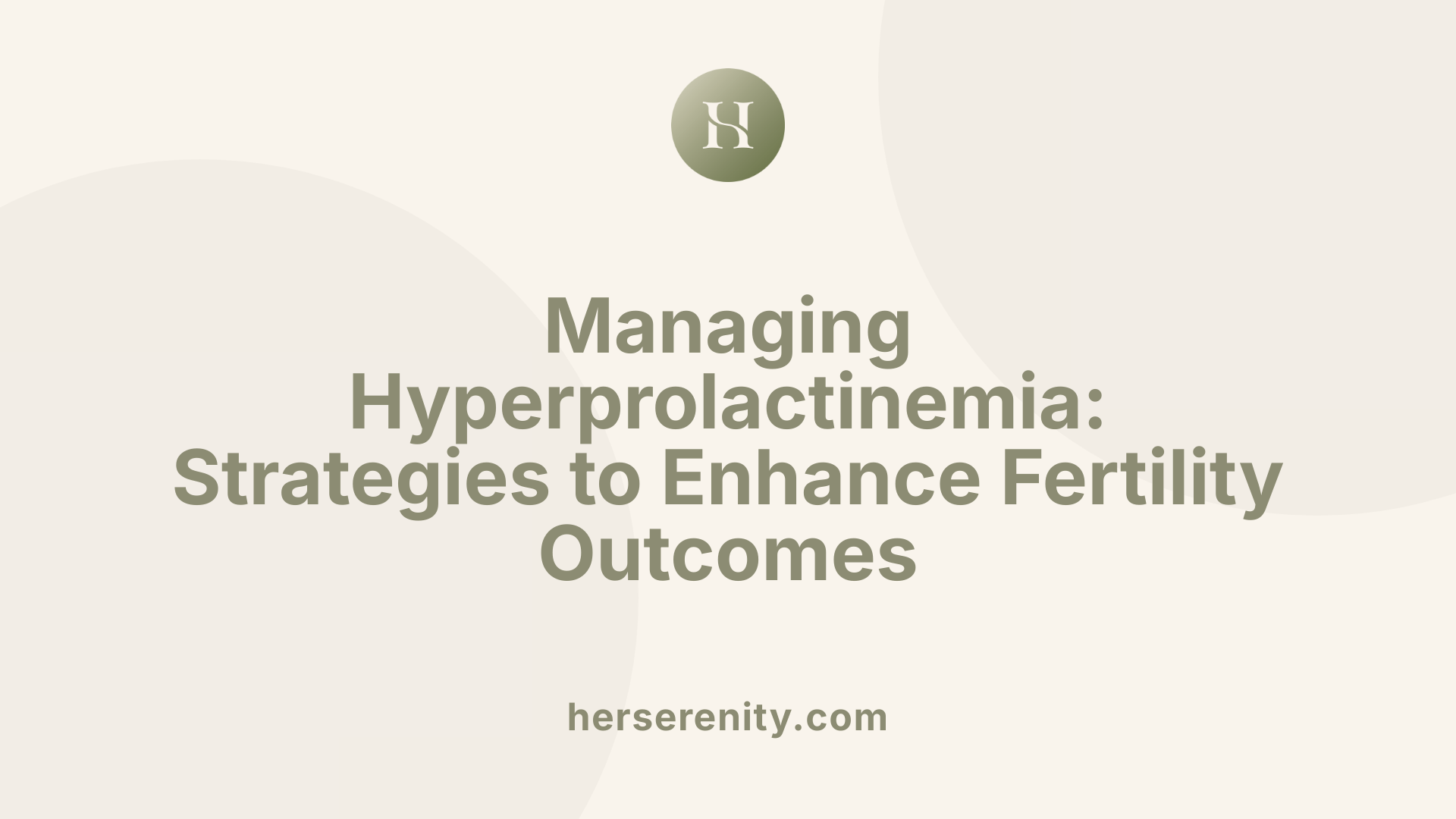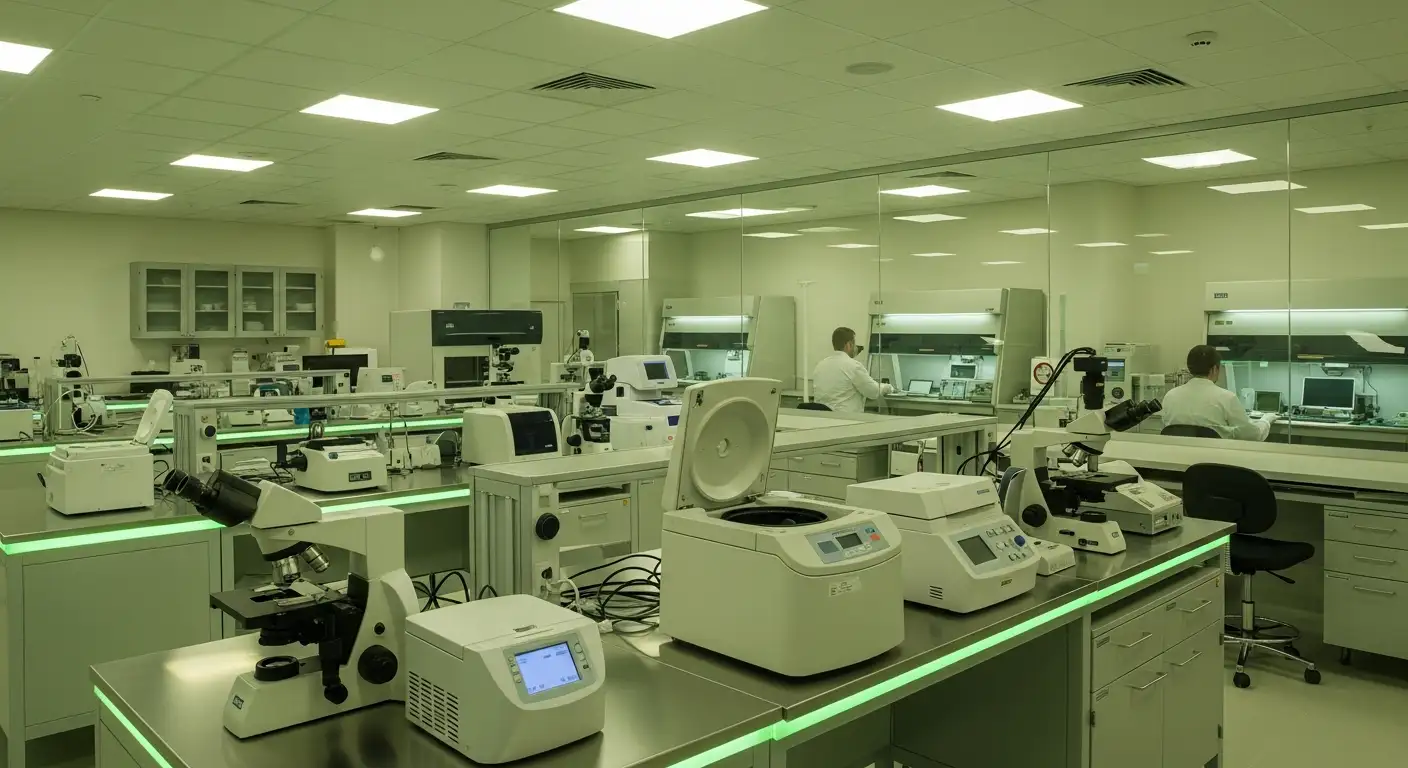How prolactin levels can impact fertility
Unraveling the Role of Prolactin in Reproductive Health and Fertility

The Complex Influence of Prolactin on Fertility
Prolactin is a hormone best known for its role in lactation, yet its influence extends deeply into various reproductive processes affecting both men and women. Understanding how prolactin levels impact fertility is crucial for individuals and couples facing reproductive challenges, as well as for professionals guiding medical treatment in fertility care. This article explores the multifaceted roles of prolactin, its effects when levels are abnormal, and the therapeutic approaches that can restore fertility balance.
Prolactin: Beyond Lactation to Reproductive Regulation

What is prolactin and what roles does it play beyond lactation?
Prolactin is a hormone primarily produced by the pituitary gland located at the base of the brain. While it is best known for stimulating breast development and triggering milk production during and after pregnancy, prolactin's influence extends far beyond lactation.
Physiological roles of prolactin beyond breast milk production
Prolactin plays important roles in female reproductive health, including:
- Oocyte Development: Prolactin supports the maturation and competence of egg cells.
- Corpus Luteum Formation and Survival: It helps maintain the corpus luteum, a structure vital for progesterone production in early pregnancy.
- Implantation: Prolactin enhances endometrial receptivity and facilitates blastocyst implantation.
- Steroidogenesis: It influences the synthesis of reproductive steroid hormones such as estrogen and progesterone.
- Immunomodulation: The hormone modulates immune responses critical to embryo acceptance and pregnancy maintenance.
Sites of prolactin production and regulation
Most circulating prolactin is produced by the pituitary gland. Prolactin secretion is tightly regulated by dopamine, which inhibits its release, and estrogen, which stimulates production. This balance ensures prolactin levels adjust appropriately during pregnancy and breastfeeding.
These diverse roles position prolactin as a pivotal hormone in regulating reproductive functions alongside its well-known lactation effects.
Normal vs. Abnormal Prolactin Levels and Their Measurement

What Are Normal Prolactin Levels and How Are They Tested?
Normal prolactin concentrations vary between men and women and fluctuate in different physiological states. For non-pregnant women, typical serum prolactin levels range from approximately 4.8 to 23.3 ng/mL. Men usually have slightly lower normal ranges, between 4.0 and 15.2 ng/mL. During pregnancy and breastfeeding, prolactin levels naturally increase significantly, often rising to values between 80 and 400 ng/mL to support lactation.
Diagnosis of Abnormal Prolactin Levels
Elevated prolactin levels, a condition known as hyperprolactinemia, are defined as serum prolactin exceeding 25 ng/mL in women who are neither pregnant nor breastfeeding. Mild elevations may occur without symptoms, but levels above 50 ng/mL often cause menstrual irregularities and fertility issues, while levels exceeding 100 ng/mL may lead to symptoms resembling menopause. Abnormal prolactin levels may be linked to pituitary tumors, hypothyroidism, medications, or other medical conditions.
Methods to Measure and Interpret Prolactin Concentrations
Prolactin is measured via a simple blood test. Blood samples are typically analyzed using immunoassays that quantify serum prolactin concentrations. If elevated prolactin is detected, further evaluation may include magnetic resonance imaging (MRI) of the brain to assess for pituitary adenomas (prolactinomas). Interpretation of results considers the patient's clinical context, menstrual status, and any confounding factors such as stress or medication use for accurate diagnosis and tailored management.
Hyperprolactinemia: Causes and Clinical Presentation

What causes high prolactin levels and what symptoms do they cause?
Hyperprolactinemia is a condition characterized by elevated levels of prolactin in the blood, a hormone produced by the pituitary gland to promote breast tissue development and milk production. This condition can be caused by a variety of factors including pituitary tumors known as prolactinomas, hypothyroidism, certain medications such as antidepressants and antipsychotics, as well as physiological states like pregnancy, breastfeeding, and stress.
Other contributors to high prolactin levels include chest wall irritation, intense exercise, sleep deprivation, and nipple stimulation. These factors may disrupt the normal regulatory influence of dopamine on prolactin secretion.
In terms of symptoms, women with hyperprolactinemia often experience infertility, irregular or missed menstrual periods, absent ovulation (anovulation), and galactorrhea — the unexpected milk discharge from the breasts. Men may exhibit erectile dysfunction, reduced libido, infertility, and sometimes gynecomastia (breast enlargement).
Diagnosis typically involves measuring prolactin levels via blood tests, with levels above 25 ng/mL in non-pregnant women considered elevated. Additional imaging tests like MRI scans may be required to detect pituitary tumors.
Understanding the cause and clinical presentation of hyperprolactinemia is essential for timely and effective treatment, which may include dopamine agonist medications, surgery, or management of underlying conditions like hypothyroidism.
Impact of Elevated Prolactin on Female Fertility
How does elevated prolactin affect female reproductive hormones and ovulation?
Elevated prolactin, or hyperprolactinemia, disrupts the delicate hormonal balance essential for female fertility by inhibiting the secretion of gonadotropin-releasing hormone (GnRH). This suppression decreases the production of luteinizing hormone (LH) and follicle-stimulating hormone (FSH), leading to a condition called hypogonadotropic hypogonadism. As a result, women may experience irregular or absent menstrual cycles and fail to ovulate (anovulation).
Anovulation and amenorrhea
The decline in LH and FSH caused by high prolactin levels hampers the normal ovulatory process, often resulting in anovulation. Without ovulation, the body cannot produce an egg for fertilization, leading to fertility challenges. Additionally, women may develop amenorrhea—complete cessation of menstrual periods—due to this hormonal disruption.
Luteal phase defects and corpus luteum insufficiency
Elevated prolactin also contributes to early corpus luteum insufficiency and luteal phase defects. The corpus luteum is critical after ovulation, as it produces progesterone necessary for preparing and maintaining the uterine lining for implantation. When its function is impaired, the luteal phase shortens or weakens, potentially causing difficulties with embryo implantation and sustaining pregnancy.
Together, these effects of hyperprolactinemia reduce the likelihood of successful conception by interfering with ovulation, menstrual regularity, and hormonal support of early pregnancy.
Consequences of High Prolactin Levels in Male Fertility
What are the effects of hyperprolactinemia on male fertility?
Hyperprolactinemia in men causes suppression of testosterone production, which is essential for normal sexual and reproductive functions. Low testosterone levels can lead to erectile dysfunction, reduced libido, and decreased sperm production.
Suppression of testosterone production
Elevated prolactin disrupts the pituitary-hormonal axis, resulting in lower secretion of gonadotropins responsible for stimulating testosterone synthesis. This hormonal imbalance reduces testosterone availability, impairing spermatogenesis and sexual function.
Erectile dysfunction and reduced sperm production
Due to decreased testosterone, men may experience difficulties achieving or maintaining an erection and suffer diminished sperm count and quality. These effects contribute directly to infertility problems.
Impact on sexual function and fertility
Beyond sperm production, high prolactin levels can cause gynecomastia and reduce sexual desire, further affecting fertility and quality of life. Addressing hyperprolactinemia through proper diagnosis and treatment can help restore hormonal balance and improve male reproductive health.
Prolactin’s Role in Early Reproductive Processes
How does prolactin influence early stages of reproduction beyond ovulation?
Prolactin plays a crucial role in several early reproductive events beyond simply triggering ovulation. Elevated prolactin concentrations found in follicular fluid have been linked with greater oocyte competence, meaning the eggs are more likely to be of high quality and ready for fertilization.
Once ovulation occurs, prolactin supports the formation and survival of the corpus luteum, a temporary endocrine structure essential for producing progesterone. This hormone is vital for preparing and maintaining the uterine lining to support an early pregnancy.
Moreover, prolactin acts on the endometrium (the lining of the uterus), modulating its function and immune environment. These changes help improve endometrial receptivity, creating a more favorable site for blastocyst implantation. Enhanced implantation prospects directly increase the chances of achieving and sustaining a successful pregnancy.
In summary, prolactin's involvement spans from improving egg quality to nurturing the hormonal and immune milieu necessary for embryo implantation and early gestation. This multifaceted influence underscores its importance in fertility and reproductive success.
Prolactin Levels During Assisted Reproductive Technologies (ART) and IVF
How does transient hyperprolactinemia during IVF impact outcomes?
During IVF cycles, transient rises in prolactin levels are common. These increases can be triggered by gonadotropin administration, GnRH agonists, elevated estradiol, or stress related to the procedures themselves. Importantly, this temporary hyperprolactinemia typically does not negatively affect IVF outcomes. In fact, some studies have shown it may be associated with improved implantation and pregnancy rates, suggesting the body’s response to treatment can enhance reproductive potential.
What is the impact of prolactin on fertilization and pregnancy rates?
Prolactin influences multiple reproductive processes beyond lactation. Elevated prolactin levels in follicular fluid have been linked to better oocyte competence and enhanced corpus luteum formation and survival, which are critical for sustaining early pregnancy. Moderate serum prolactin levels (30–60 ng/mL) may correlate with higher pregnancy rates during IVF, whereas very high or low prolactin levels can be neutral or detrimental. Moreover, prolactin supports endometrial receptivity and embryo implantation, which are essential for successful pregnancies.
How is hyperprolactinemia managed during IVF?
Managing elevated prolactin through dopamine agonists like bromocriptine or cabergoline has proven beneficial. Treatment before IVF can restore granulosa cell function, improving oocyte quality and ovarian responsiveness. Administering dopamine agonists during IVF cycles may increase fertilization and conception rates, particularly for women with hyperprolactinemia or previous IVF failures. These medications safely normalize prolactin levels without harming IVF success.
Treatment decisions should consider individual prolactin levels and IVF history. Regular monitoring ensures optimal hormone balance, supporting better reproductive outcomes.
| Aspect | Effect of Elevated Prolactin | Management Approach |
|---|---|---|
| Transient IVF-related hyperprolactinemia | Usually neutral or positive on implantation and pregnancy rates | Monitoring; typically no treatment needed unless persistent |
| Prolactin on oocyte quality | Enhances competence and corpus luteum function | Dopamine agonists can improve ovarian responsiveness |
| Dopamine agonist therapy | Restores ovarian function, improves fertilization rates | Bromocriptine and cabergoline during IVF cycles |
In summary, transient prolactin elevations during IVF generally do not hinder success. When sustained high prolactin is present, treatment with dopamine agonists can improve reproductive outcomes, making prolactin management an important consideration in assisted reproductive technologies.
Monitoring and Managing Hyperprolactinemia to Improve Fertility

What are the methods for diagnosing and treating high prolactin to restore fertility?
Diagnosing hyperprolactinemia primarily involves blood tests to measure serum prolactin levels. Normal prolactin levels for non-pregnant women are below 25 ng/mL, and levels above this indicate hyperprolactinemia. When high prolactin levels are detected, MRI scans of the brain are often used to check for pituitary tumors, such as prolactinomas, which are common causes of elevated prolactin.
Treatment usually begins with dopamine agonist medications like bromocriptine and cabergoline. These drugs reduce prolactin production by stimulating dopamine receptors in the pituitary gland, effectively normalizing prolactin levels within a few weeks. Dopamine agonists not only normalize hormone levels but also restore menstrual cycles and improve ovulation in women, thereby enhancing fertility outcomes. Treatment may also be continued during pregnancy with careful hormonal monitoring.
In cases where medication is ineffective or if a large pituitary tumor is present, surgical removal via transsphenoidal adenoma resection might be necessary. Radiation therapy is another alternative for resistant or recurrent tumors.
Alongside medical and surgical treatments, lifestyle modifications play a supportive role. Managing stress, avoiding medications that raise prolactin, and addressing hypothyroidism can help maintain hormonal balance. Since stress and certain drugs can elevate prolactin, lifestyle and medication review are important parts of comprehensive care to improve fertility.
Through proper diagnosis and targeted treatments including dopamine agonists, surgery if needed, and lifestyle changes, fertility impairments due to high prolactin can be effectively managed.
Complex Relationship Between Prolactin Levels and Fertility Outcomes
Is there an optimal prolactin range for fertility, and how does it affect pregnancy?
Research indicates that maintaining moderate prolactin levels, typically between 30 and 60 ng/mL, is associated with better pregnancy success. Women with prolactin levels in this range often experience higher rates of implantation and clinical pregnancy compared to those with very low or very high prolactin concentrations.
Negative effects of very high or very low prolactin
Extremely elevated prolactin levels can disrupt the reproductive hormone balance by inhibiting GnRH secretion, which in turn decreases LH and FSH. This hormonal disruption often leads to menstrual irregularities, anovulation, and infertility. Conversely, prolactin levels significantly below the moderate range may not effectively support reproductive processes such as corpus luteum formation and endometrial receptivity, potentially resulting in suboptimal fertility outcomes.
Prolactin's immunomodulatory roles
Beyond its direct hormonal effects, prolactin plays an important role in modulating the immune environment of the uterus. It contributes to endometrial function and facilitates embryo implantation by regulating immune responses that favor pregnancy maintenance. This immunomodulatory activity is critical for establishing a receptive environment for embryo development.
Together, these aspects highlight the complex and nuanced role of prolactin in fertility. Achieving and maintaining prolactin within a moderate range supports reproductive function not only through hormonal regulation but also by fostering favorable immune conditions in the uterus, thereby enhancing the likelihood of successful pregnancy.
Endometrial Prolactin and Fertility Treatment Outcomes

How do prolactin levels affect outcomes in assisted reproduction like frozen embryo transfers?
Prolactin plays a significant role in reproductive functions including embryo implantation and endometrial receptivity. In frozen embryo transfer (FET) cycles utilizing hormone replacement therapy (HRT), elevated serum prolactin levels—specifically those exceeding 20 ng/mL—measured prior to endometrial transformation have been associated with diminished fertility outcomes.
Women with higher prolactin concentrations at this stage exhibit notably lower live birth rates alongside increased risk of early miscarriage. This correlation remains significant even when controlling for variables such as age, body mass index (BMI), hormone levels, endometrial thickness, and embryo quality. Such findings suggest that hyperprolactinemia may adversely influence the delicate embryo-endometrial synchrony essential for successful implantation and pregnancy progression.
Given these impacts, monitoring prolactin levels during the endometrial preparation phase of FET could provide valuable predictive information. While routine prolactin measurement is not yet standard practice in assisted reproductive technology (ART), emerging evidence supports its potential to enhance clinical decision-making.
By identifying elevated prolactin timely, clinicians might tailor management strategies, such as dopamine agonist therapy or other interventions, to optimize hormone balance and improve implantation success and live birth rates in women undergoing FET. Incorporating prolactin assessment into ART protocols could ultimately contribute to better individualized care and improved reproductive outcomes.
Integrating Hormonal Assessments for Fertility Planning
Role of prolactin, AMH, and FSH testing
Comprehensive fertility evaluation commonly includes testing serum levels of prolactin, anti-Müllerian hormone (AMH), and follicle-stimulating hormone (FSH). Prolactin influences ovulation, corpus luteum function, and endometrial receptivity, so abnormal levels can cause infertility. AMH reflects ovarian reserve and can indicate disorders like polycystic ovarian syndrome (PCOS) or early menopause. FSH regulates ovarian follicle development and sperm production, with deviations pointing to ovarian insufficiency or tumors.
Interpretation for fertility health and disorders
Measuring prolactin alongside AMH and FSH offers a broad snapshot of reproductive status. Elevated prolactin may suppress gonadotropin-releasing hormone (GnRH), reducing LH and FSH secretion, leading to anovulation. Altered AMH levels pinpoint diminished egg supply or overactivity characteristic of PCOS. Abnormal FSH helps identify ovulatory dysfunction or impaired testicular function. This integrated hormonal profile helps reveal underlying causes of infertility such as hyperprolactinemia, hypogonadotropic hypogonadism, or ovarian reserve deficits.
Guidance for treatment options and IVF planning
Interpretation of hormonal testing guides precision treatment approaches. Dopamine agonists like bromocriptine effectively normalize prolactin levels, restoring ovulation and improving IVF success rates in women with hyperprolactinemia. AMH and FSH results inform ovarian stimulation protocols and can predict IVF outcomes. Monitoring these hormones also aids in selecting appropriate assisted reproductive technologies or hormone therapies. Tailoring fertility treatment based on this hormonal assessment optimizes chances for conception and successful pregnancy outcomes.
How does testing prolactin alongside other hormones assist fertility evaluation and treatment?
Assessing prolactin levels together with AMH and FSH helps evaluate ovarian reserve, ovulation status, and overall hormonal balance. This comprehensive hormonal profile guides diagnosis of conditions such as PCOS or hypogonadism and informs tailored treatment plans including medication or IVF protocols.
Prolactin’s Pivotal Role in Fertility Management
Prolactin is a critical hormone influencing multiple facets of reproduction in both men and women. Abnormal prolactin levels, especially hyperprolactinemia, can disrupt reproductive hormones, impair ovulation or sperm production, and lead to infertility. However, with appropriate diagnosis and treatment—including dopamine agonists, surgical intervention, and lifestyle adjustments—many individuals can restore hormonal balance and improve fertility prospects. Moreover, prolactin’s nuanced role in processes like corpus luteum support, endometrial receptivity, and implantation emphasizes the importance of careful monitoring, especially during assisted reproductive treatments. Continued research and clinical vigilance offer hope for optimizing fertility outcomes through thoughtful prolactin management.
References
- Prolactin Relationship with Fertility and In Vitro Fertilization ...
- Prolactin: What It Is, Function & Levels
- Prolactin and Fertility: Impact of High Prolactin on Conception
- Hyperprolactinemia (High Prolactin Levels)
- Prolactin, a hormone that can affect reproductive capacity
- Prolactin and Fertility: Its Effects on Male and Female ...
- Hyperprolactinemia (Prolaction Disorder)
- Elevated prolactin levels before endometrial transformation ...
- Prolactin, AMH & FSH: What These Hormones Say About ...


































































































